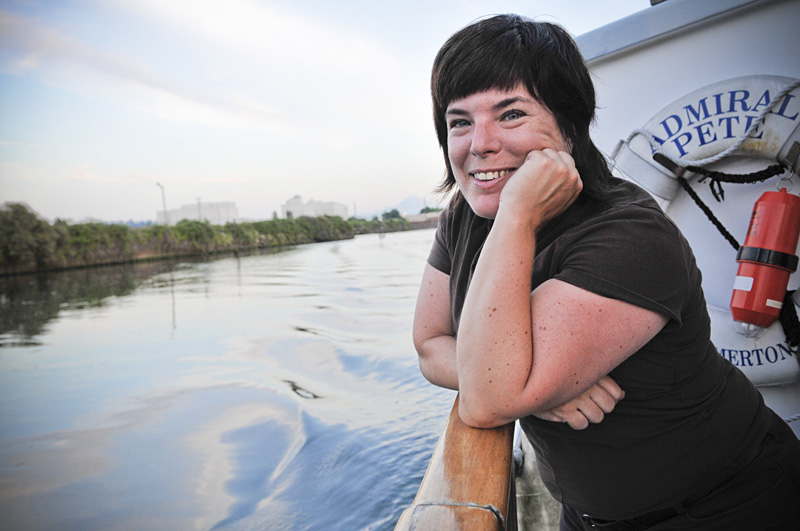You don’t need the EPA to tell you the Duwamish River is dirty. We’ve been dumping in it since the Denny party arrived on Alki. Subsequently, the Duwamish was straightened, its tideflats filled and covered (hence Georgetown and SoDo), its farmlands paved over, and its banks lined with heavy industry that used it as a sewer. It was declared a Superfund site in 2001.
But a lot’s changed since then. And Cari Simson is one of the big reasons why.
Sitting in one of the very few parks on the Duwamish, you can hear the screech of ospreys amid the low rumble of passing freight trains. “We see the resurgence of wildlife,” says Simson, who for the past six years has been bringing students and other groups here to raise awareness of the river and its fate. As program manager for the Duwamish River Cleanup Coalition, she also organizes regular work parties. “In April, we took two tons of trash out,” she says. “We found toilets and live ammunition and all kinds of junk.”
Though advocating for the Duwamish is now her full-time job, when she moved here in 1995, she recalls, “I had no idea the Duwamish existed.” The Vermont native was working as a journalist for the short-lived Capitol Hill weekly Tablet in 2001 when she took a kayak trip with coalition founder B.J. Cummings. “I was shocked that we had a Superfund site here,” she recalls. After grad school at Antioch, she went to work for Cummings’ organization.
“This is a good example of what will happen on the Duwamish,” she continues, as we amble along the shore, where volunteers have recently cleaned some of the tideflats and planted new beachgrass. Just inland, a freshly dug tidepool is already green and marshy-smelling. “It’s manmade, but it replicates tideland,” she says. Nearly all the Duwamish’s original marshes and tidelands have been lost. (Its shorelines were much longer when they meandered in oxbows.)
Simson’s group puts its energies not just into cleanup but into promoting a future for the Duwamish, once the feds finish dredging the contaminated river-bottom mud (a job that’s years away from even starting). The coalition promotes a blue-sky vision for the long-neglected region. How about gondolas reaching up to Beacon Hill, Pigeon Point, and White Center? Increased waterfront access and uncovering creeks? Affordable housing? Simson says the coalition doesn’t want to gentrify the area, but instead create “a merging of the high-tech and industrial base” with the Superfund effort at the center.
Seattle City Council President Richard Conlin notes that the neglected area had long needed a strong, unified voice of advocacy, which the coalition provides. And he says he’s a particular admirer of the coalition’s vision, which sees the Duwamish as “a center of the city, not someplace we turn our backs to.”








